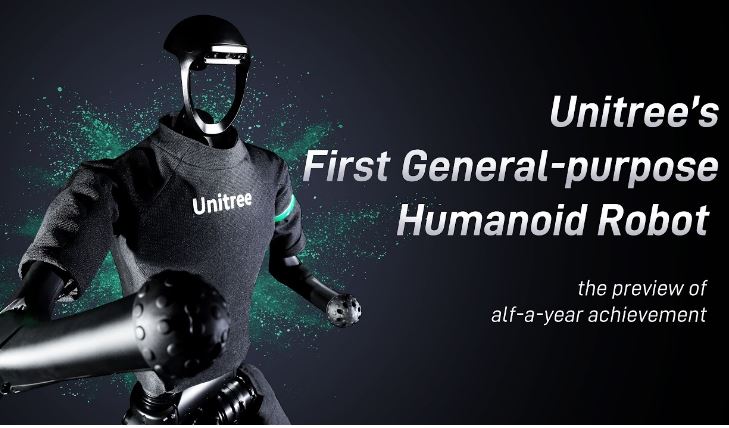Unitree Robotics has recently unveiled what is potentially the most powerful full-sized universal humanoid robot in Asia, the Unitree H1. This bipedal humanoid robot is a significant advancement in the field of robotics, showcasing the capabilities of modern engineering and artificial intelligence.
Technical Specifications and Capabilities
The Unitree H1 can perform a variety of tasks that require human-like dexterity and movement. It features advanced sensors, actuators, and AI algorithms that enable it to navigate complex environments, manipulate objects with precision, and interact with humans safely and effectively.
One of the standout features of the Unitree H1 is its ability to maintain balance and stability while performing dynamic movements. This is achieved through a combination of sophisticated control systems and real-time data processing, allowing the robot to adapt to changing conditions and maintain its footing even on uneven surfaces.
Applications in Various Industries
The versatility of the Unitree H1 makes it suitable for a wide range of applications across different industries. In manufacturing, the robot can automate repetitive tasks, improve efficiency, and reduce the risk of workplace injuries. Its dexterity and precision make it ideal for tasks that require fine motor skills, such as assembly and quality control.
In the healthcare sector, the Unitree H1 can assist with patient care, rehabilitation, and elderly support. Its ability to interact with humans in a safe and controlled manner makes it a valuable tool for providing assistance.
The robot also has potential applications in the service industry, where it can be used for tasks such as customer service, cleaning, and delivery. Its adaptability and ability to learn new tasks through AI training make it a versatile addition to any workforce.
Comparison with Other Humanoid Robots
The Unitree H1 stands out among other humanoid robots due to its advanced capabilities and robust design. Compared to robots like Tesla’s Optimus and Boston Dynamics’ Atlas, the Unitree H1 offers a unique combination of power, precision, and versatility.
Tesla’s Optimus, for example, is designed primarily for industrial applications and relies heavily on remote control assistance. While it showcases impressive capabilities, it is not yet ready for household use. On the other hand, Boston Dynamics’ Atlas is famous for its dynamic movement and agility, but it is still in the prototype stage and primarily used for research and development.
The Unitree H1, with its market-ready status and wide range of applications, positions itself as a strong contender in the humanoid robot market. Its ability to perform tasks autonomously and adapt to different environments makes it a valuable asset for various industries.
Future Prospects and Developments
The development of the Unitree H1 is a milestone in robotics, and it opens up new possibilities for the future. As AI advances, we can expect to see even more sophisticated and capable humanoid robots entering the market.
Unitree Robotics is likely to continue refining and improving the H1, incorporating new technologies and expanding its capabilities. The company’s focus on innovation ensures that the Unitree H1 will remain at the forefront of humanoid robotics.
With the growing demand for automation, the Unitree H1 can make a significant impact on various industries. Its potential to improve efficiency, enhance safety, and provide valuable assistance makes it a promising addition to robotics.
Ready to Transform Your Hotel Experience? Schedule a free demo today
Explore Textify’s AI membership
Explore latest trends with NewsGenie
